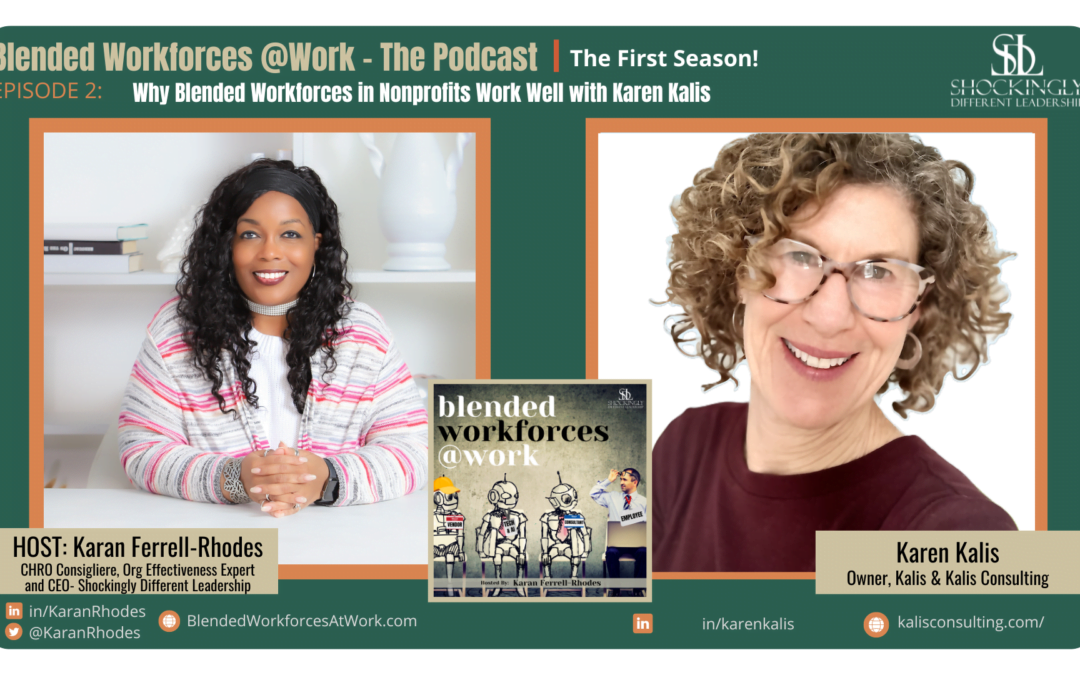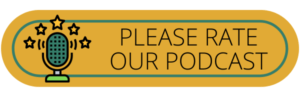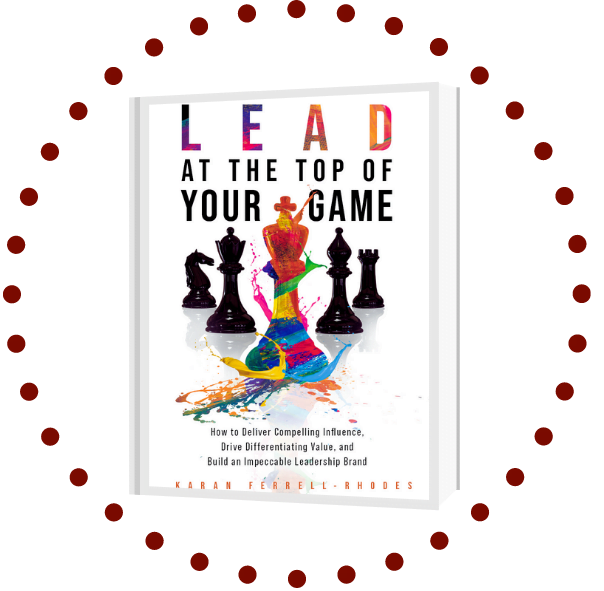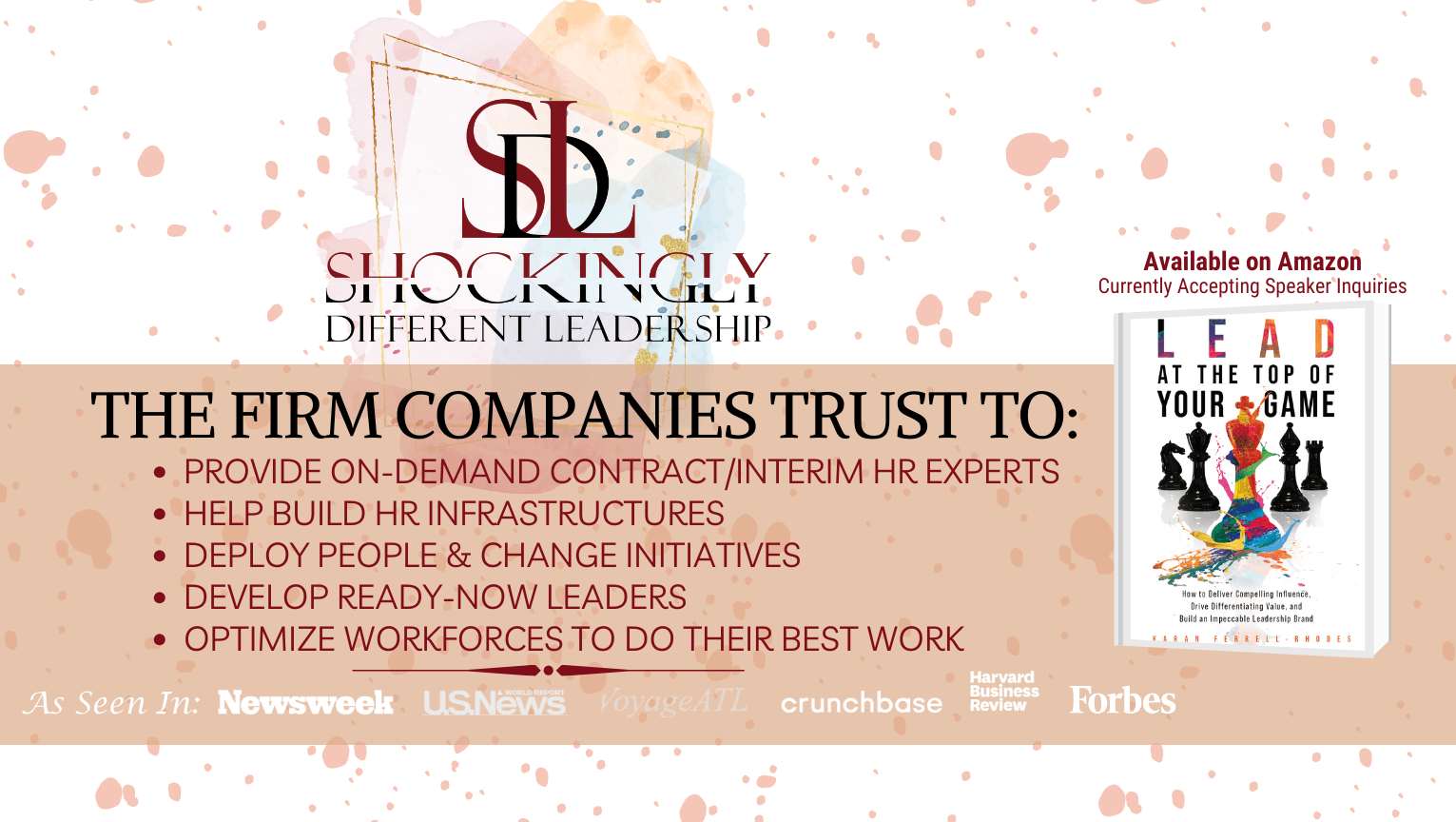IN THIS EPISODE, KARAN FERRELL-RHODES INTERVIEWS KAREN KALIS.
The mission-driven nature of nonprofit work can be both satisfying and demanding. Often run with limited funding, nonprofit organizations need to optimize their workforces to maximize their impact, making nonprofits an ideal candidate for blended workspaces.
Karen Kalis is a Human Resources leader with over 20 years of experience and the founder of Kalis & Kalis Consulting. Throughout the episode, we dive into Karen’s insights from working with several nonprofit & public sector organizations, critical success factors and pitfalls to avoid when implementing a blended workforce strategy, and much more.
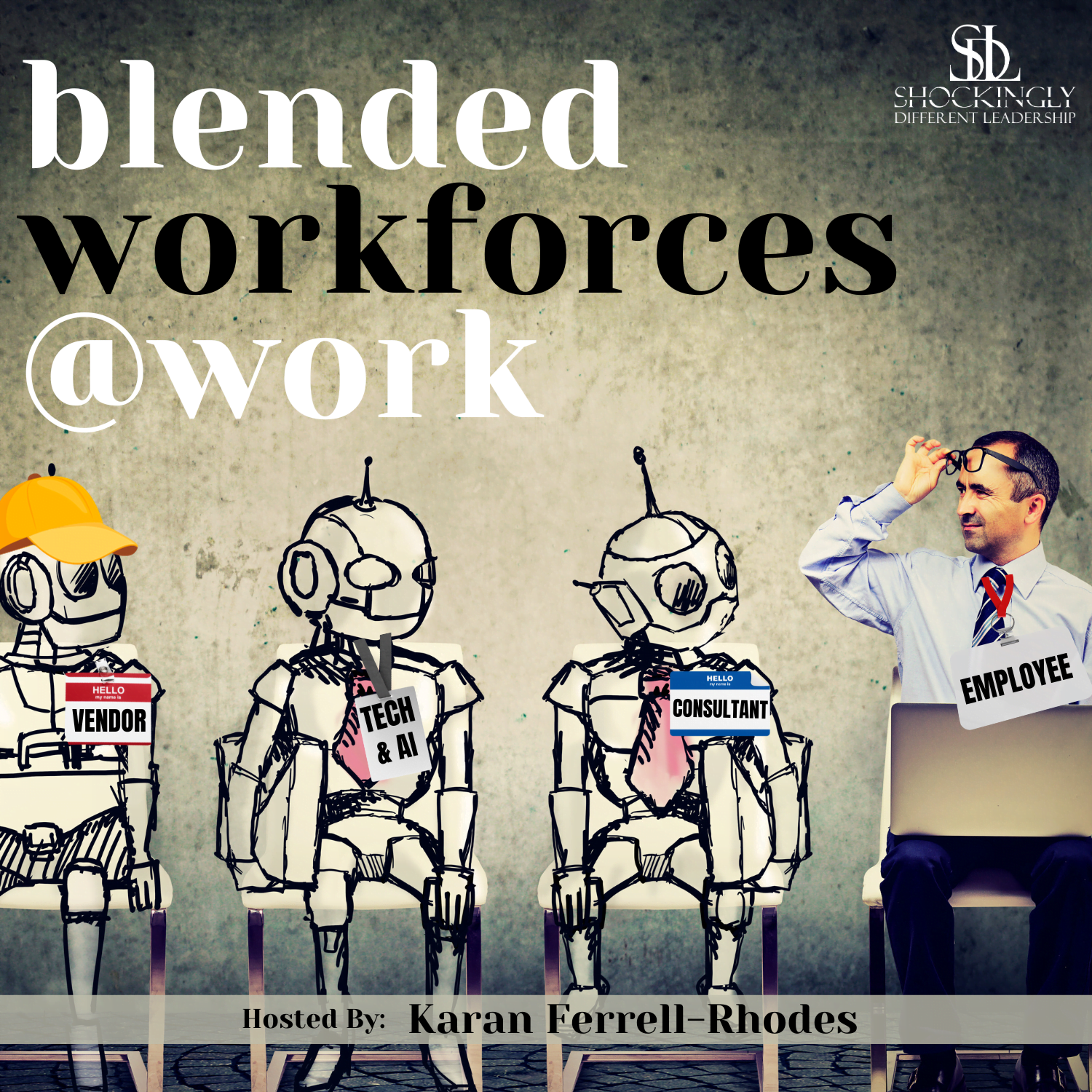
Posted by
SDL Media Team
Rather view our video podcast?
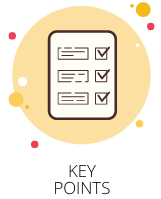
WHAT TO LISTEN FOR:
- How do mission-driven organizational cultures help external talent blend in better?
- How do you establish healthy expectations, boundaries, and performance benchmarks when working with independent contractors?
- How do we utilize different backgrounds of business partners to advance the value created by the business?
- Why is it important to align the workforce strategy of an organization with the business strategy?
“Make sure you know what support you will have and won’t have as a contractor.”
FEATURED TIMESTAMPS:
[04:20] Karen’s journey in the corporate human resources world.
[06:17] HR in nonprofits – Karen’s thoughts on managing HR functions with limited funding.
[08:04] External Talent – How to source external talent & the value they provide to nonprofit organizations.
[11:28] Karen’s advice for independent contractors who wish to work with an organization
[13:55] Building a Business – Karen’s thoughts on her experience of building a consulting business with her husband and what she learned throughout that journey.
[17:00] Division of Duties – How Karen and her husband, David, utilize their expertise in different fields to manage their business together.
[19:00] Value of Networking – Karen shares how the professional networks we build can create valuable opportunities for business development.
[21:36] Workforce & Business Strategy – How to align your workforce strategy with the business strategy and why it is vital for the organization’s success.
[23:52] Signature Segment: Karen’s LATTOYG Tactics of Choice: Leading With Stakeholder Savvy.
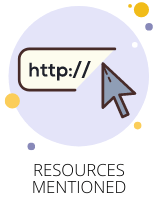
ABOUT KAREN KALIS:
A seasoned Human Resources leader with over 20 years of experience, Karen is passionate about empowering employees and maximizing an organization’s potential. Her expertise spans training and development, leadership coaching, and fostering employee engagement. Throughout her career, Karen has held leadership roles in both nonprofit and public sector organizations.
Karen brings a strong academic foundation to her work, holding a Master of Science degree in Management and Leadership from Western Governors University and a Bachelor of Arts degree from the University of California, Santa Barbara. Her commitment to professional excellence is further evidenced by her SPHR and SHRM-SCP certifications.
LINKS FOR KAREN:
- Website: www.kalisconsulting.com
- LinkedIn: linkedin.com/in/karenkalis
ADDITIONAL RESOURCES FOR YOU:
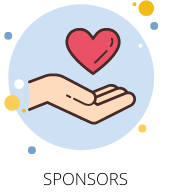
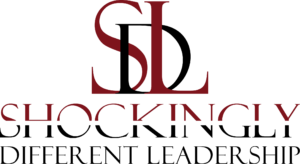
Episode Sponsor
This podcast episode is sponsored by Shockingly Different Leadership (SDL), the leader in on-demand People, Talent Development & Organizational Effectiveness professional services that up-level leader capability and optimize workforces to do their best work.
SDL is the go-to firm companies trust when needing to:
- supplement their in-house HR teams with contract or interim HR experts
- implement leadership development programs that demonstrate an immediate ROI and impact on the business

Click the plus button on the tab to access the written transcript:
Episode 2 | Why Blended Workforces in Nonprofits Work Well with Karen Kalis
Karan Rhodes 00:01
Blending workforces are one of the hottest talent strategies today, where employers are using a mix of traditional employees with external resources like independent contractors, coaches, consultants, vendors, and technology solutions, all in order to enhance competitiveness, ensure cost flexibility, and expedite business goals. But how are the successful companies infusing blended workforces into their business strategy? And what are the critical success factors and pitfalls to avoid during implementation? And on the flip side, what does it really take for suppliers to improve their chances of finding and landing contract opportunities? The devil is in the details, my friends! I’m your host, Karan Ferrell Rhodes, and it’s time to get smarter about Blended Workforces at Work! Hello, my dear listeners and friends welcome to today’s show. We are absolutely thrilled to feature Believe it or not another Karen is going to be the Karen Karen share today. We’re so happy to feature Karen callous who is the founder of callous and callous consulting their firm is that firm is a leadership development and human resources consulting firm, which Karen founded with her husband, David. Now previous to starting the firm, Karen had an extensive career in training, development, HR and leadership coaching, as well as employee engagement. And she has had a ton of experience in the nonprofit private and public sector arenas. So you can imagine the types of stories that she may have for us. Now her husband, David, who’s not on the show today, we’re featuring Karen today, but he’s also a co founder. And he has received a doctorate in clinical psychology, and is an expert on in behavioral health, workplace culture, staff development and leadership coaching. And this dynamic duo teamed up after having individual careers to come and form this fantastic firm, where they’re providing a lot of high quality, innovative support for organizations, individuals and systems. So welcome to the show, Karen.
Karen Kalis 02:20
thank you so much for having me, I am overjoyed to be here. We’re
Karan Rhodes 02:25
just absolutely thrilled to have you as well and can’t wait to delve into some of your insights both when you were working for an employer. And then now as you’ve made that transition to running your own firm with your husband, so we really want to get into that. But before we get into the great stuff, we want to start with probably some even better things because we love to get a sneak peek into your personal life and passions first, as much as you feel comfortable. So can you share a tidbit or two with this?
Karen Kalis 02:58
Sure. You bet. I live in Boulder, Colorado, with my husband. We both love outdoor activities, as all boulder writes, do? Yeah. So hiking and just being in the beautiful outdoors is incredibly important. We have an adult daughter who lives out of state now but is thinking of moving back to Boulder soon. So we are really happy about that. Yes, I mean, we’re we’re overjoyed and incredibly proud of her. And we live here in our house with our two cats who you may see running through the background at some point,
Karan Rhodes 03:41
That is totally fine. Because I know my listeners know and those who are on YouTube watchers know that. I have two toy dogs underneath my desk right now. And sometimes they like to be part of the podcast as well. So it’s our fur babies are more than welcome to show up when they want to if they want to. Well, let’s get started. Karen, I’d love to first start a little bit about have you talk a little bit about your employment. And I want to say just corporate America. So you’ve had a tad there, but you’ve been in a lot of different industries. But can you share a little bit of overview about your experience before you started the firm, callous and callous with your husband?
Karen Kalis 04:25
Of course. My Human Resources career started many years ago at a temporary service in California where I was working in the office, placing temporary employees with our clients and that was my introduction to HR which fits really nicely with this conversation that we’re having today. When I moved to Colorado my career had I had various different jobs but the majority of my career was spent in and public sector, public school district as an HR specialist, and then also in nonprofit for a human services organization. I did have some time in human resources for a tech startup for a short time. But really the majority of it was spent for an in a nonprofit. And then since I’ve been consulting I’ve been consulting with for profit nonprofits, at whole variety of industries and sectors.
Karan Rhodes 05:32
Very fascinating, absolutely fascinating. And I always love to i t’s but it’s kind of serious. I’ve never yet in my over 20 year career have met an overstaffed HR function. We, I don’t think we’ve made that if you’ve seen one, I would love to meet them. Never, never have. And as much as in most of my career was in corporate America before founding SDL. But as understaffed as we were at corporate I was at like enterprise level companies, nonprofits are even more understaffed because I found in working with them, because they’re having to do a lot with a little. So I’m wondering if you have seen that in your experience as well, and how that nonprofits compared to maybe like public sector type of organization.
Karen Kalis 06:25
I agree with what you said, Karen, with the nonprofits tend to have less funding and therefore their human resources, functions can be stretched even thinner. And the nonprofit industry that I worked in, received its funding from primarily the state of Colorado, but some federal funding as well. But those funding streams were, they were limited, we never had the opportunity to charge to increase our fees for services, those fees were set by the state. So when the economy changed, or the cost of hiring change, we didn’t have the opportunity to increase the price of our product to pass that along to our employees or our contractors. So in those cases, where do you cut costs, you cut costs in in some of the areas like human resources or other things.
Karan Rhodes 07:32
Unfortunately, but on the other hand, people strategies are the heartbeat of what my organization’s work. So it’s almost like an oxymoron, if you will, you know,
Karen Kalis 07:44
It’s a catch 22.
Karan Rhodes 07:46
That’s what I think. A catch 22 is perfect. So I’m curious, if you think back into the times when maybe you were able to I don’t know, in what employer organization, but think to a time when you all found a little bit of budget, and were able to hire some external assistance, contractors, or maybe a technology solution or what have you. Why do you think the business leaders supported that? And were there any roadblocks to like onboarding, external talent and to get them ramped up really quick?
Karen Kalis 08:24
So I do want to talk about the the nonprofit where I worked with in human services, and it was a it’s a, it’s a fairly large nonprofit, probably around 500 employees. Yeah. But also hundreds of independent contractors, really, and yes, and they were performing very specific, very critical roles for that company. And it worked. It worked wonderfully. And so the leadership of that company, we we all very much supported those contractors, and the recruitment, the onboarding, because they were such a critical part of the company. And it worked beautifully. Now I do. I do think that having a mission driven organization, where the mission is clearly articulated, and the vision is clearly articulated, helps in bringing on those contingent employees or those independent contractors in a way that helps them blend with the overall culture. Because because everybody, the employees, and the the external workers all have the same mission.
Karan Rhodes 09:46
They know what they’re signing up for, kind of
Karen Kalis 09:48
They know what they’re signing up for. And in this case, the financially it was the financially prudent method to use to to to provide the services that we needed to provide, that
Karan Rhodes 10:03
makes a lot of sense. And I don’t know if you remember, but how did you source your contractors at the time? Because that’s a lot of contractors to kind of have an eye out for Did you have another organization that kind of screened them and brought them in? Or did you all have to select them? Do you remember?
Karen Kalis 10:21
I do remember? And that is such a great question. And with that many contractors, of course, you’re you’re right, just sourcing them and finding them and onboarding them. All of that is a major responsibility. Yeah, we had a department that managed those contractors, because we had enough and they were all doing the same function, this large group of contractors was all performing the same function. So we did have a department that manage that, that screened the potential contractors and on boarded them in, you know, to the thing to the the areas that they needed to be on boarded, and then manage them on an ongoing basis as well, in terms of making sure they were fulfilling the requirements of their contract in the way that the contract was written.
Karan Rhodes 11:12
Very fascinating. If you had one piece of advice to give someone who’s an independent contractor that is considering a role similar to you know, the ones that you mentioned, where they’re going to be part of a big team that is doing a specific project, is there one piece of advice or recommendation that you want to make sure that they walk away with because I know a lot of, especially brand new freelancers, or independent contractors, they were fantastic when they were working within the organizational structure. But switching their hats to being a contractor is kind of a little bit of a different world. So I’m curious if you have any kind of piece of advice or things that you noted, that might be great for others to know.
Karen Kalis 12:01
Yes, you’re and you’re right, Karen, switching from being an employee over to a contractor, it’s, it’s a really big difference. I would say, make sure you understand what support you will have and won’t have as a contractor. How is the company that you’re contracting with going to be involved? And is that okay with you? And some contractors don’t want any involvement, they really want to be independent, and other contractors may not be comfortable with that if they’ve always been employed previously.
Karan Rhodes 12:41
Great point. Great point. And then I’m also curious as to, and it’s okay, if the answer’s no, because not all companies aren’t many companies don’t do this at all. But did you ever give any instruction to maybe the leaders of the departments that the companies that contractors are working in, on what kind of interactions they can and cannot have with the contractor so as not to cross the knees? They are as guidelines or anything like that?
Karen Kalis 13:11
Absolutely. Yes, absolutely. And as you know, that can be so tricky, especially if you have long term contractors, and you do need to manage performance or outcomes in some way, shape, or form, but you can’t manage performance in the same way you do for an employee. So yes, there were plenty of those conversations.
Karan Rhodes 13:39
Sure, sure. Well, let’s, let’s hop to the other side of the table, because at some point you and David found that callous and callous so you kind of went from the both of you the employer side of the house to the external workforce side of the house. Tell me how that transition was for you in making that decision.
Karen Kalis 14:02
For me and I think for David, both it’s it’s really been great I, I love the ability to support a business or support leadership from a business and not go down that rabbit hole with them of of everything that might be involved in the business. You can provide your information, you can make recommendations, you can complete the task project, whatever it is that that you are tasked with as a consultant, but you’re not you’re not married to that company in the same way you may feel that you are if you’re employed.
Karan Rhodes 14:46
Absolutely. And was it a hard transition for you and David to because it’s hard you I mean, leading your own firm is a full time job within itself, right?
Karen Kalis 14:58
Right there half and challenges Yes, for me, I’m not going to speak for David. But for me, I have missed having a team of people that I am that I work with day in and day out. And that I’m part of. And, you know, I have found that in other ways, but that is the teams that I have worked with in the past have been pure magic at times. And I miss having that.
Karan Rhodes 15:30
I love that you said that, Karen, because that was one of the reasons why we adapted our business model two years in, because I you can tell I, on the off the charts extrovert I love I get my energy energy interacting with people. And yes, you interact very heavily with the clients. But once you roll off a project other than staying in touch and saying hello, every now and then you kind of lose that that intimate, professional relationship when you’re, you know, rolling your sleeves up day in and day out helping them right. And so a couple years into us, because I started out as a solopreneur. But a couple years into our business model, we worked with my coach, and we kind of changed it to having a more stable internal team. Because that’s, that’s where me as a founder got my energy from and it seemed like others that I partner with those that I knew and could vouch for, they were feeling the same way. And so I was like, wow, let’s just just build a team to, for us to be able to have that kind of connection. So I totally relate to that. Definitely.
Karen Kalis 16:40
Yeah, that’s been that’s been a big thing for me.
Karan Rhodes 16:43
Well, how do you and David split up the duties? Because you all have different areas of expertise that synergize very well, I must say, from paper anyway. But how do you all kind of divvy up duties? Is it based on what comes across your desk? Or are you very intentional about who’s going to take what we’d love your thinking around that?
Karen Kalis 17:08
We’re really doing two separate things that happen to overlap. So my focus is human resources, leadership development, management, development, workforce strategy, you know, I might get into compensation, things like that. David is with his clinical psychology background, he is organizational psychology, he may administered different assessments with either an entire organization or individuals in an organization and then follow up with coaching around those assessments. So he really draws on his background as a clinical psychologist for the work that he does. And I’m really drawing on my background in management and leadership and human resources are the things that I do. Now, sometimes they cross over, as you can see, but
Karan Rhodes 18:13
And sometimes they don’t maybe, right.
Karen Kalis 18:15
And sometimes they don’t. Right. So it may be that I have a client that he’s not at all involved in, or he has a client that I’m not at all involved in.
Karan Rhodes 18:23
That makes a lot of sense. And I’m curious, where do you find your clients? How do you do? How do you do business development?
Karen Kalis 18:31
David’s better at that than I?
Karan Rhodes 18:36
Really?
Karen Kalis 18:37
Really, largely referral based?
Karan Rhodes 18:40
Yeah, that’s very common. Do you all do any other type of outreach? Because I know there’s a lot of consultants out there that are just curious on best practices on how to get even your first client. And in fact, referrals always a bit as you use your network. It’s already warm, they’ll they’re more inclined to keep you in mind. But what are, are there any other things that you will leverage to try to get your name out into the market?
Karen Kalis 19:07
Absolutely. I’ve joined a consultant collaborative. So it’s HR consultants in the Colorado more or less the Front Range area. And that’s been great for me, primarily, we meet online, and we will pass clients to each other if we’re overwhelmed ourselves and don’t have the bandwidth to take on another client or if the client is asking for something that we don’t feel is within our area of expertise. So that’s been fantastic, both in terms of gaining referrals, but also to help me with that, that missing of a team that we talked about before. And I’m okay with not having regular clients and working 40 hours every week and Mike consulting business. I know a lot of people aren’t. And that’s another challenge of being a consultant is you really, obviously you really don’t know if you’re going to have steady work a week from now a month from now or six months from now.
Karan Rhodes 20:15
That’s right.
Karen Kalis 20:15
So another another thing absolutely to keep in mind as you wade into the consulting waters,
Karan Rhodes 20:22
You’re so right on that. And people seem to underestimate sometimes how long it takes to effectively like replace your salary or to have semi consistent income. And you have to really take your personal budgeting and business budgeting seriously so that during the leaner months or weeks that you’re able to still pay the light bill. While you though, while you’re trying to, you know, get additional business. You’re so right on that, if you had one piece of advice or suggestion for leaders who are considering a blended Workforce Strategy, as a significant piece of their organization say they’re going to transition to kind of rethinking where they find talent and who it is and how they work. What is one? I know there’s a ton of advice you probably could give based on your background, but what is one piece of advice you would want any business leader to keep in mind?
Karen Kalis 21:30
To make sure that your workforce strategy, whatever that may be, is in alignment with your business strategy?
Karan Rhodes 21:42
Love that. Say more about that.
Karen Kalis 21:44
Well, your your business strategy has to direct your workforce strategy, your business strategy has to come first. So have that laid out, have that plan in place, and then consider what your workforce strategy might look like so that you can achieve your business strategy? And consider everything you don’t have to you don’t have to use everything, but consider everything part time employees, temporary employees, external employees, how does AI fit into your workforce strategy? How to depending on what your business is, maybe robots fit into your workforce strategy. All of those things can be part of your workforce. But your workforce planning should be driven by your business strategy.
Karan Rhodes 22:39
You know, I could just drop the mic there that is priceless. Karen Absolutely, is priceless. And I’m gonna, you know, do the Yes, Dan. Yes. And I will say once you have a straw man or framework of the business strategy, you’re thinking about, bring in your HR advisor, or HR leader, or consultant very soon into that, so that you can socialize it with them your thinking. So they can maybe give you some initial feedback that might help you tweak your business strategy if needed. And let them be partners with you as you close the business strategy on out versus locking and loading it and then bringing them in and say, Okay, you implement it. And there might be blind spots that you miss. Right?
Karen Kalis 23:29
Absolutely. Yes.
Karan Rhodes 23:32
That’s what I’ve seen. Well, so thank you so much for the those pieces of insight. One question we always love to ask our guests is, you know, as you know, I read a book on leadership execution best practices, and we talk about seven tactics, that very successful leaders always make sure they incorporate in any leadership effort of any kind. And you were so kind to share that leading with intellectual horsepower really resonated with you. And so for my listeners out there, leading intellectual horsepower is all about using your areas of expertise to what we call peek around corners and spot trends, that and connect the dots that others may have missed or did not realize it’s all about bringing using your expertise to bring new and innovative opportunities to the table. And so we’re just curious, Karen curious minds want to know why intellectual horsepower really piqued your interest and stood out for you?
Karen Kalis 24:31
I think intellectual horsepower is an area that I identify with and find to be fun, if that can make sense in this. And when I’m part of a leadership team, or in a consulting role, I think I’m skilled at and enjoy asking the questions to bring up About I love how the peeking around the corner, right to asking the questions to find out well, well, what about, well, what if? Well, let’s look at it differently, and exploring all of the different angles, poking holes in things to make sure that the the ideas or the direction that we’re pursuing really does make sense in all the ways or in all the ways that we can first see,
Karan Rhodes 25:27
Yes, we are definitely sisters from other mothers, because I absolutely love that as well. And it’s amazing when you have very rich conversations around that. People sometimes get nervous when you poke holes in their thoughts or ideas, but I find it creates even more innovation. People’s minds open up to to your point, what if what would happen? What if you took a chance here? Or, you know, I didn’t think about that perspective. Let me build on that. Oh, gosh, I could do that all day every day. Couldn’t you?
Karen Kalis 26:05
Yes, I love it.
Karan Rhodes 26:08
Oh, that is fantastic. Well, before we close out, Karen, I would love for you to let our listeners know where they can find you. We will definitely have all your information in the show notes and on our website. But I’d like for you to give voice to that. So if people want to reach out and check out your services, they can do so.
Karen Kalis 26:31
great. The best place to do that is our website. Of course it’s Kallusconsulting.com You can contact us easily through that website.
Karan Rhodes 26:40
And will you please spell callus for them?
Karen Kalis 26:43
Thank you, Karen. Yes, it is K A L I S consulting.com.
Karan Rhodes 26:50
Wonderful, fantastic. Well, that’s all the time, unfortunately, that we have for today. But I want to thank you so much, Karen For your gift of time and sharing your insights on blended workforces with our audience. It has been a fantastic conversation. And we really appreciate you.
Karen Kalis 27:08
Thank you so much for having me. It’s been fun.
Karan Rhodes 27:10
Oh, fantastic. And also I want to thank you listeners for the gift of your time for joining another episode of the blended workforces at work podcast. Please be sure to subscribe and rate us and share the podcast with just one friend. Because by doing so that will help us spread the word about the magnificent talent strategy of blended workforces at work. Thanks so much and see you next week. Well, that’s our show for today. Thank you again for listening to the Blended Workforces at Work podcast. You can check out the show notes, additional episodes, bonus resources, and also submit guest recommendations on our website at blendedworkforces@work.com. You can also follow me on Twitter, LinkedIn, Instagram or YouTube by searching for the name Karan Rhodes with Karan being spelled K a r a n. And if you like the show, the greatest gift you can give would be to subscribe and leave a rating on your favorite podcast platform of choice. This podcast has been a production of Shockingly Different Leadership, a global consultancy which helps organizations execute their people, talent development, and organizational effectiveness initiatives on an on-demand, contract, fractional, or project basis. Huge thanks to the SDL production and editing team for a job well done. Bye for now.

Want to be a Podcast Guest?
We’re always looking for great podcast guests to join Karan on the BWAW podcast.
Check out our guest qualifications and submit our brief form to be considered.
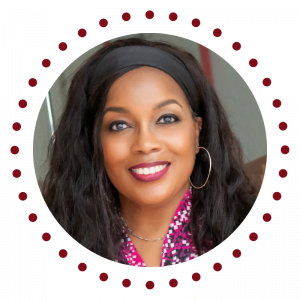
Want Karan to be Your Podcast Guest?
Karan loves being a guest on podcasts, as her schedule allows. Topics most commonly requested:
- Blended Workforces & the Gig Economy
- Critical Execution Tactics of High-performing Leaders
- Entrepreneurism & Leading Your Business

Want to be a Podcast Sponsor?
We will promote your brand with your choice of either a live read or recorded audio ad on an upcoming episode of our podcast.
All sponsorships come with a featured spot on show notes pages.
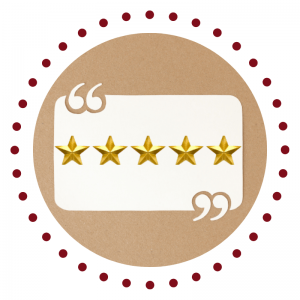
Like the Show? Please Leave a Review
Karan runs on tea, cocktails and kind words ![]() .
.
If you like the show, it would mean the world to her if you left a quick review.
Your word is golden, so a HUGE thank you in advance!
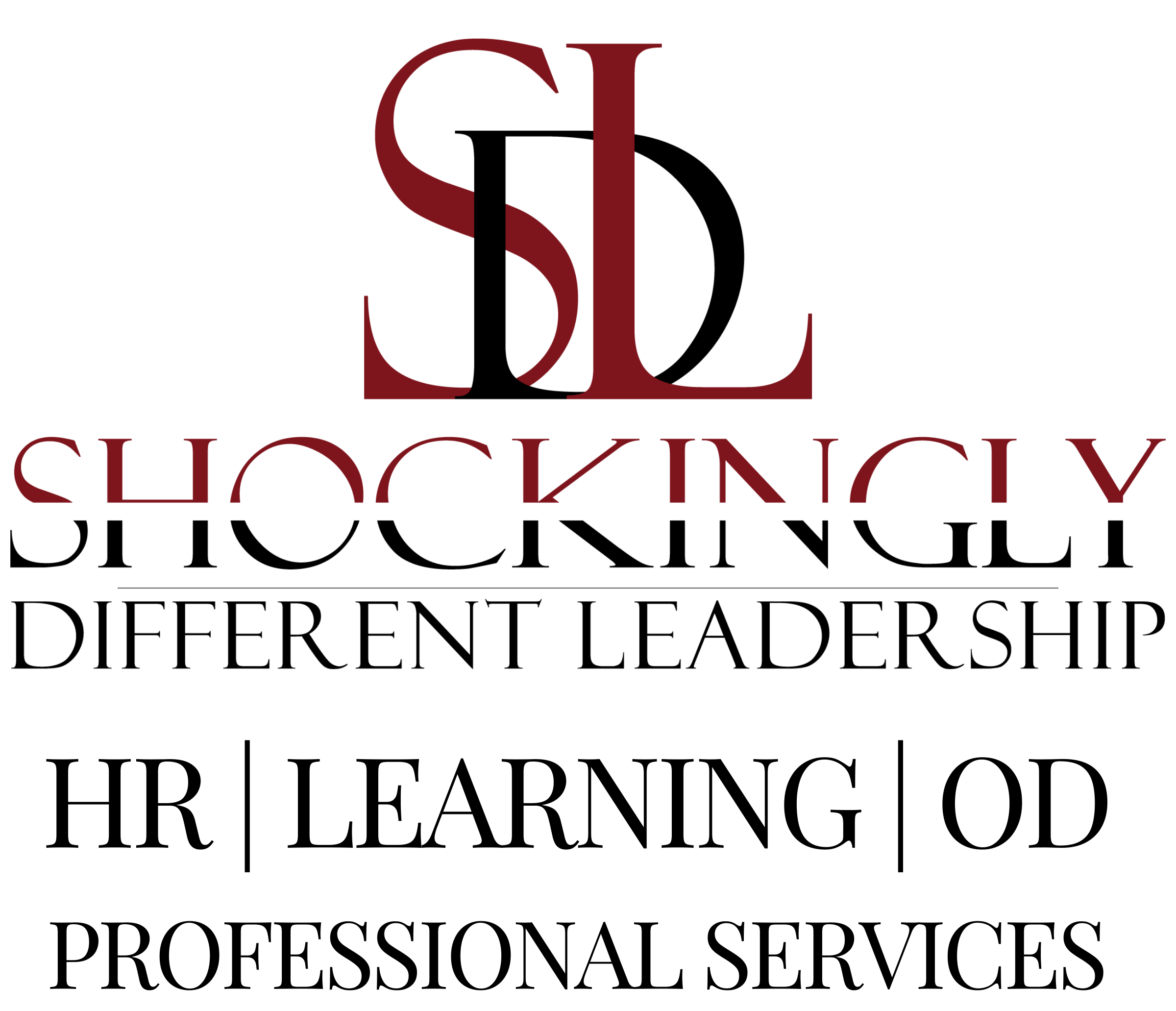
#KeepInTouch
via our podcast alerts
Subscribe now to discover why thousands of monthly listeners who are passionate about doing their best work prioritize time each week to listen to the Blended Workforces @Work podcast.
#AboutSDL
Shockingly Different Leadership is a human capital professional services consultancy that provides organizations access to the best consulting expertise in the areas of Talent Development, Organizational Development, and Human Resources – on an on-demand, project, or contract basis.
#WhereToFindUs
MAILING
4480-H South Cobb Drive
PMB 219
Smyrna, GA 30080
PHYSICAL
2121 NewMarket Parkway
Ste. 108
Marietta, GA 30067
#ContactOptions
Customer Service Email:
service@shockinglydifferent.com
Call or Text:
770-384-1103
#Office Hours
MON-FRI
8:30 AM – 6:30 PM
Weekends By Appointment

